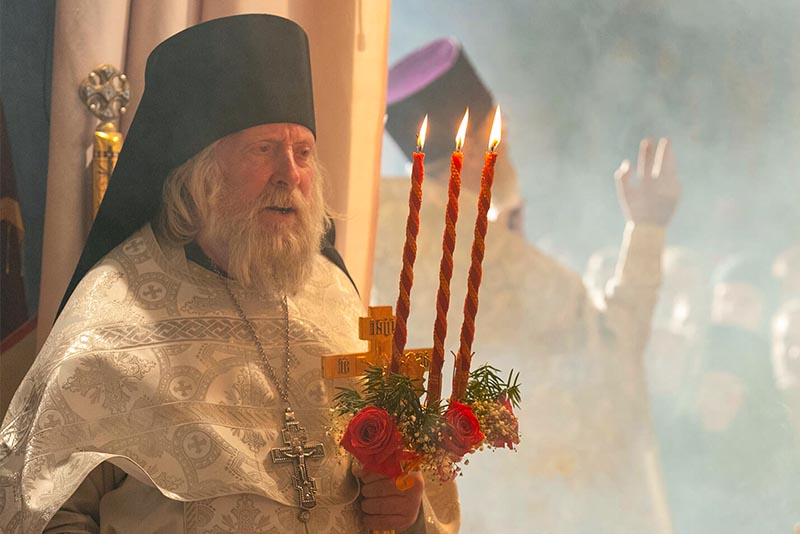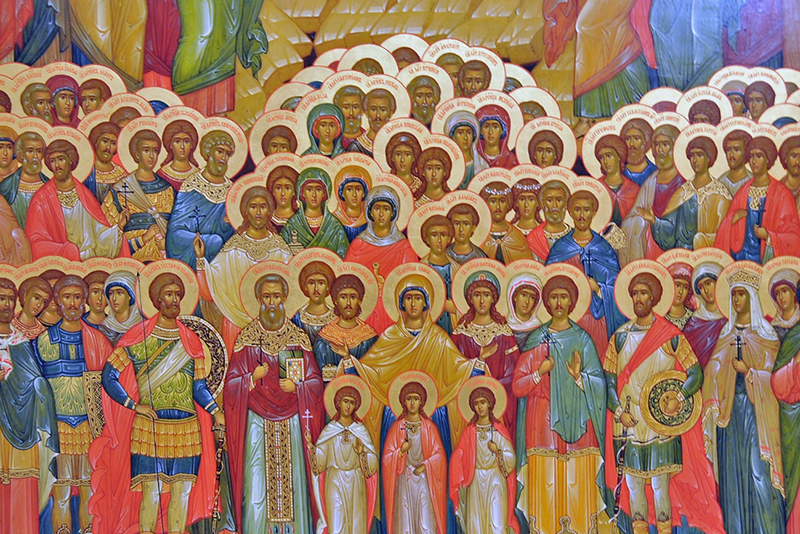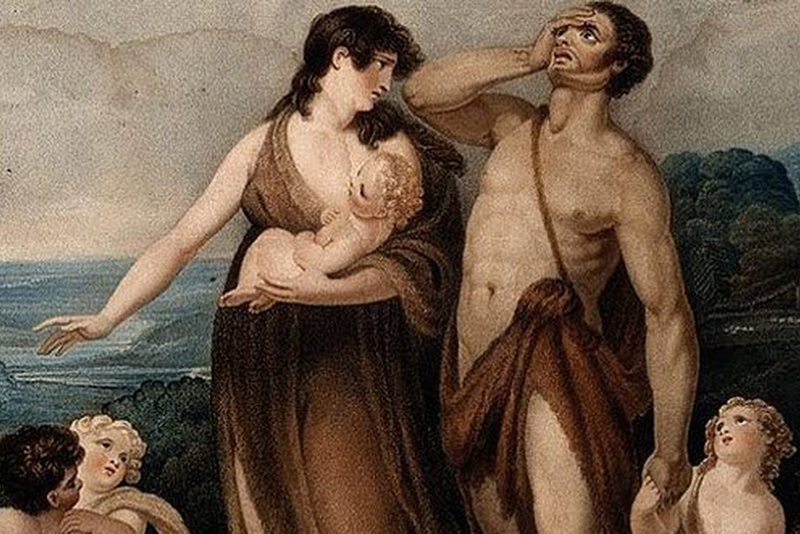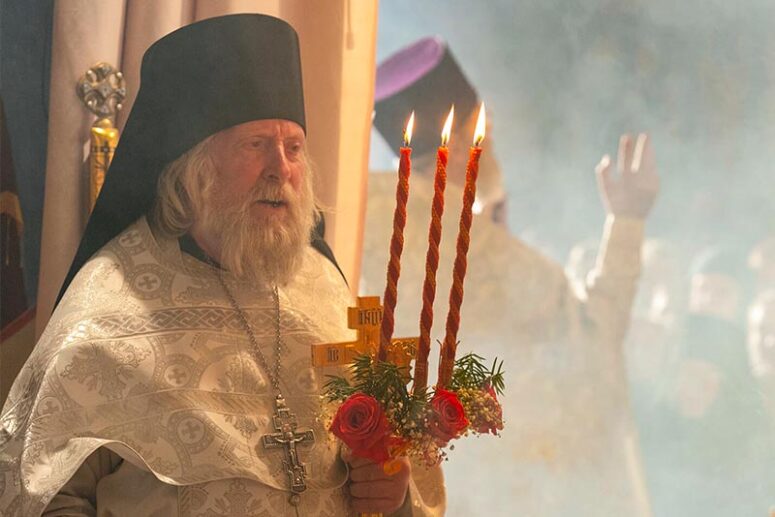
This practice comes from the hierarchical Liturgy, during which the bishop uses special candlesticks with braided candles. These candlesticks are called dikirion (Greek for “double candlestick”) and trikirion (Greek for “triple candlestick”). Their symbolic meaning echoes the sign of the cross. Two folded fingers symbolize the hypostatic union of our Lord Jesus Christ and His Redeeming Sacrifice. The Son of God became man so that we might become God. God descended from heaven to earth to raise man to heaven. Through the God-manhood of Jesus Christ, it is possible for every person to become adopted by the Lord (hence the prayer “Our Father”).
Three folded fingers in the sign of the cross is a symbol of the Holy Trinity: Father, Son and Holy Spirit. This makes the sign of the cross a gesture expressing the Symbol of Faith. In the same way, the dikirion is a symbol of the dual nature of Christ, and the trikirion is a symbol of the Holy Trinity. The light of these candles symbolizes the light of God, illuminating the world, giving life and conquering darkness. The bishop in liturgical terms symbolizes Christ. Together with the priesthood, and the faithful he represents the fullness of the Church. Without a bishop, the Church is impossible. The fullness of the grace of God rests on the bishop, which is also reflected in divine services. The bishop blessing the congregation with a dikirion and trikirion signifies the fullness of God’s grace. It is like a blessing from God Himself.
A priest also has this grace of God, but not in full measure. He receives it in the Sacrament of the Priesthood from the bishop, who delegates to him his authority to baptize, hear confessions, celebrate the Liturgy, etc. In the same way as the Ruling Bishop symbolizes Christ, the priests symbolize His holy apostles.
Priests generally do not have a right to serve with a dikirion and trikirion. This right is usually reserved for the bishop. However, once a year, on Easter and during the entire Bright Week he receives this right. He serves almost the entire Paschal Matins, as well as the beginning and end of the Paschal Liturgy with a cross and a three-candlestick. Today, for the convenience of the clergy, the two are combined into one element – a crucifix with three candles in front of it. This was done for practical purposes, so that the priest could use the other hand to hold a thurible.
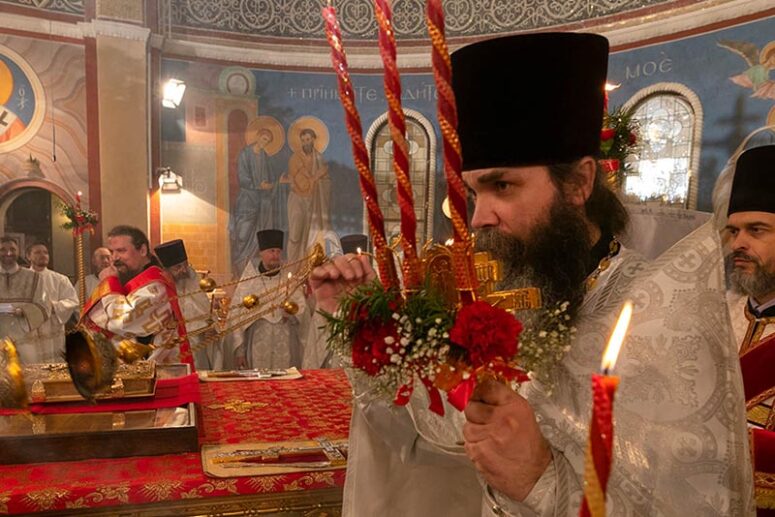
The symbolism of a crucifixion with a three-branched candlestick is similar to that of the dikirion and trikirion, as well as the sign of the cross. The crucifix is a symbol of the atoning sacrifice of our Lord Jesus Christ on the Cross. The candlestick with burning candles is a symbol of the divine light of the Holy Trinity, which enlightens the world, giving it life and salvation.
Why is it allowed for a priest to use a triple candlestick in the Paschal service? The answer is simple. It is the greatness of the Feast of feasts and the Triumph of all triumphs — the Great and Holy Pascha of the Lord. The bright Resurrection of Christ contains in itself the fullness of the grace of God, poured out into the world.
An interesting (though not obligatory) detail here is the use of certain colours of candles in the Easter candlestick(green, red and gold (yellow)). They are similar to the colours of the clothes worn by the Three Angels on the icon of the Holy Trinity by St. Andrei Rublev. Green is the colour of life and the Holy Spirit, giving life to the world. Red is the colour of martyrdom and the Redemptive Sacrifice of our Lord Jesus Christ, Who Shed His Blood and Offered Himself for the sins of all mankind. Gold (yellow) is the colour of God, and the radiance of the Divine.
So, Pascha is the fullness of God’s love for fallen humanity, the fullness of His Fatherly mercy. Life in God and with God is the eternal Pascha, which, once completed, never ends. Let us turn to the light, let us enter this eternal, unceasing Pascha, let us learn to live in it. Because Christ is in our midst! He is and ever shall be!
Translated by The Catalogue of Good Deeds

